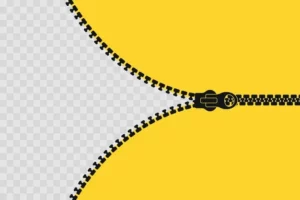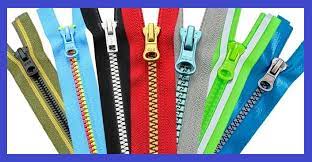
A zipper, zipper, fly, or zip tie, formerly known as a clasp locker, is a common tool used to fasten the edges of a fabric or other flexible material, such as a garment or bag. Used for clothing, luggage, and other bags, sports equipment, camp gear, and other items. It makes it convenient for many things to carry around wear etc.
Here are some types of zippers-
Closed zipper
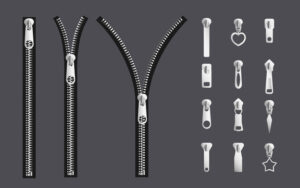
Your standard zipper. Those non-split zippers on the floor; have a lid on the lower end that prevents the pull from continuing the split. These zips are the ones that open fully so that the two sides of the zip are separated from each other. For example, these can be used on a jacket or cardigan so you can open it all the way. These come in a variety of styles such as Plastic Open End, nylon Open End, Metal Open End, and Heavy Duty Open End. Different styles of open-end zip can be applied to your garment depending on how heavy your fabric is. For example, if you have a motorcycle jacket you may want to use a Heavy Duty Metal Open End Zip while a thin cardigan may only need a lightweight Nylon Open End Zip.
Splitting the zipper
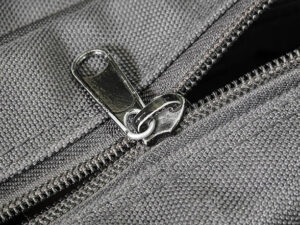
These zippers have both ends opened with a single slide – they have a lock (box and pin) at the bottom that can be used to attach the teeth to the zipper.
You can use this type of zipper on jackets, coats, coats, sweatshirts, hoodies, blouses, vests where both parts should be open. They usually come in long lengths. These zips are also called open zippers.
Two ways to split a zipper
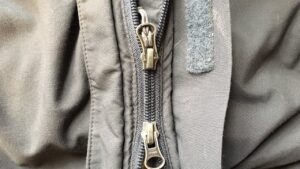
These are also called double zippers, double zippers, or double-headed zippers. They have two slides/dots. Once the zipper is installed, the bottom slide can accentuate the zipper teeth, opening the lower part of the zipper.
Split zippers are used for sewing that should be fully open. They are great when used in open jackets on the front. You also see them in loads.
Continuous zipper chain
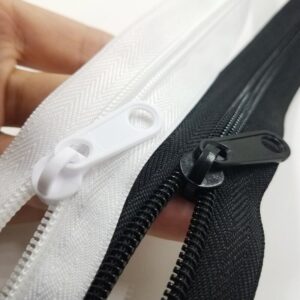
These are extra long zippers that you can cut to any length you want – 100 – 300 inches long and inches long. Extra-long chains are used for tents, cushions, clothing bags, mattress covers, etc. anywhere you want that takes longer than regular zippers.
Nylon coil zipper
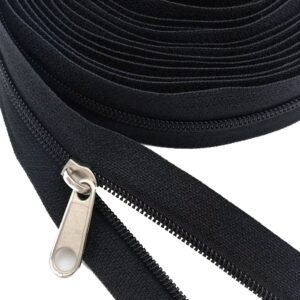
These are small zippers made of plastic with polyester sides. They are very simple and are available as dividing or closing or separating two paths and at different lengths. Coil zipper — also known as nylon coil zipper — is a type of dental zipper/component made of traditionally folded monofilament which is nylon. The coil is sewn on zipper tape to make the final product. The zipper product is finished when the nylon-wrapped teeth are sewn into zipper tape. The nylon coil zipper has a continuous coil chain made of nylon. When this coil is placed on the back of the zipper and not on the front, this type of zipper is called an invisible zipper.
Metal teeth zipper
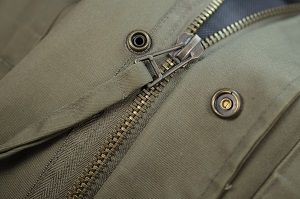
These come in many lengths and varieties. Short zippers are used on jeans with shiny gold/brass. They are available in 4 -9-inch lengths. Then there are the aluminum zippers. These are the tips of the heavy gauge. Zonickels have shiny silver and last longer than aluminum. These are often used for sewing on heavy fabrics.
Molded plastic zipper

These plastic zippers are also called park bolts and look almost like metal zippers. These are used for jackets, parks, bathing suits, coats, hoodies, sweaters, sportswear, fur jackets, etc. They look very attractive and at the same time lightweight, heat resistant, and rusty.
Pant Zipper

These are short nylon coil zippers (7 ″ generally); also called zipper pants in my part of the world – because this is the type of zipper used on a painted fly. They are made of plastic with polyester sides. You can use them on skirts, pillows, bags, and blouse backs. They usually have something to stand on the ground to prevent them from splitting. If you have a zipper that you cut out of the lid you need to glue the zipper teeth together so that they do not fall apart.
Invisible zippers
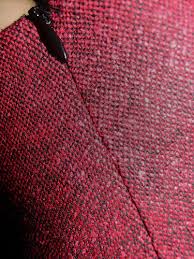
This is a type of zipper that looks invisible when used on stitches without its small narrow pull. An invisible zipper foot is often used. You can also sew this with a foot zipper. You can use this on the back of the dress and the side seams of tight clothing, skirts, etc. and it will look like there’s no zipper there, just stitches.
Bag zipper
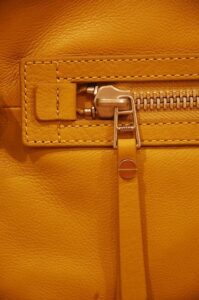
These zip coils have a slide / unlock pull. These zips do not split on the floor. These are available in lengths of 9 inches and 14 inches.
Waterproof zipper
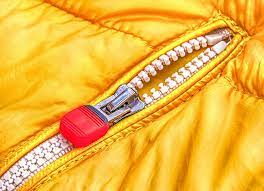
These are best used for tents, outdoor gear, etc. These are strong weather-resistant zippers that will survive all bad weather. They are also flexible and strong
Lapped Zipper
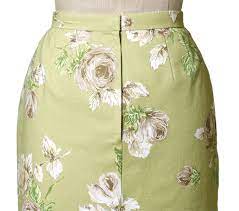
In this application, the zipper is covered with fabric (the placket or the opening itself) with the smart use of sewing in a certain way. It can be used as a side opening or opening the center of the back of a garment. More about full zip sewing can be found here.
Centered Zipper
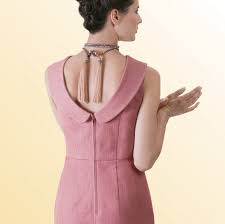
In this application the zipper is sewn on the seam as it is – it is not hidden by any additional fabric.
Open zippers
Here the zipper is deliberately exposed – usually metal with large teeth and plastic zippers are used for this. If the zipper can be fully opened at the end, one side can be separated from the other, the last open zipper (split zipper). This usually follows the PIN and the box method. In some cases, the input code is inserted to the right and the box is attached to the left, while in other cases, the input pin is inserted to the left and the box is inserted to the right. In any case, the zipper will fall on 2 halves when fully opened, coming out of each other.
Fly zipper
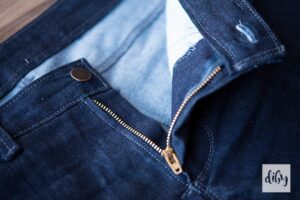
Type of zipper application used in front of pants. Before your guess starts too high, please note that “flying” does not refer to the zipper but to the piece of fabric that closes the zipper. … With this definition in mind, 19th-century tailors used the word “fly” to apply a cloth band attached to one end to close a hole in a garment.

